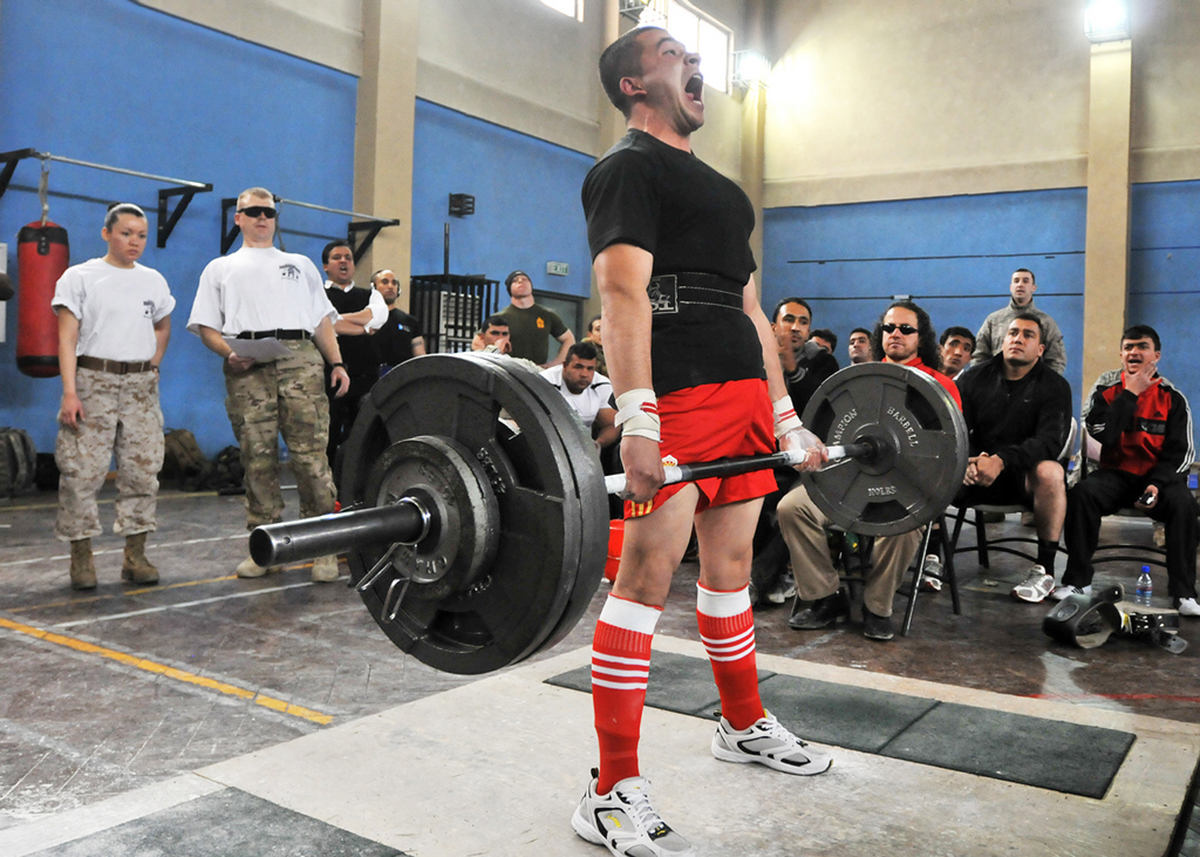Table of Contents
What’s so tough about lifting a bar off the floor?
When you look at a deadlift, it seems incredibly straightforward – walk up to a barbell, bend down and grab it with both hands, then pull it up until you’re standing upright.
Described like that, it really doesn’t seem like there’s too much to the deadlift. If that’s the case, then why are so many people terrible deadlifters?

If there’s one exercise more seasoned gym goers injure themselves on more than any other, it’s the deadlift. And the one area they always seem to aggravate – the lower back. Thing is, even if you can pull a heavy bar off the floor, if your technique isn’t one hundred percent, you’re placing yourself at a huge risk ok injury on every single rep.
Then there’s the issue of strength itself. Some guys and girls can just muscle the bar off the floor, even with shoddy technique, yet others struggle as soon as there’s even the lightest weight on the bar.
Key Technique Tips for the Deadlift
1. Walk up to the bar with purpose. The deadlift is not a lift to be taken lightly, and you need some aggression; not too much though – you must be calm enough to remember all your cues, but angry enough that there’s no way that bar’s going back down before you’ve locked it out.
2. Stand so the bar is dissecting the middle of your feet. If you’re wearing lace up shoes, the bar should be right over your bow, or the tongue of your shoes.
3. Bend down and grab the bar. Don’t worry too much about your position just yet, focus solely on holding the bar as tightly as you can. Your hands should be roughly shoulder width apart.
4. Bend your knees a little until your shins are lightly touching the bar From this point on, the bar should be in contact with your body (first the shins, and later the thighs) at all times. If it drifts out in front, not only will you probably miss the lift, but you’ll round your lower back, and ping – that’s a disc herniation.
5. Drop your butt down. This is key in nailing the initial pull. You want your hips low enough that your back is flat, but not so low that your position resembles the bottom of a squat. The best way to ensure this is to keep pushing your butt down until you feel a stretch in your hamstrings and stop there – not a millimeter further.
6. Lift your head up so you’re looking straight ahead and very slightly up, then think “big chest.” This will bring your shoulder blades back and give you an even stronger starting position.
Read More: Weightlifting: Lift Slow Or Lift Fast, That Is The Question Now
7. Take a big breath of air then pull the bar from the floor. Keep your chest up and head forward so you don’t round your lower back.
8. As the bar rises above your knees, start to push your hips forward forcefully. Squeeze your glutes hard and push them forward.
9. At the top of the lift, keep tight and stand tall. This is your finishing position. If you’re competing in a powerlifting competition, the judge will give you the call of “down” to signal that you’ve completed the lift and must now return the bar to the floor under control.
How to Prevent Injuries from Deadlifts
Deadlifts are a highly effective exercise for building strength in the lower back, glutes, and hamstrings. However, they can be demanding on the body, and performing them with improper form or excessive weight can increase the risk of injury. Here are some tips to help prevent injuries while performing deadlifts:
-
Learn Proper Form: Proper form is crucial for safe deadlifting. Focus on maintaining a neutral spine, engaging your core, and using your hips and legs to lift the weight. The rest of tips can be found above.
-
Warm Up: Warm up adequately before starting your deadlift session. Perform dynamic stretches and light cardiovascular exercises to increase blood flow to your muscles and prepare your body for the upcoming workout.
-
Start with Light Weights: If you're new to deadlifting or returning after a break, start with light weights to practice and reinforce proper form. Gradually increase the weight as your strength and technique improve.
-
Use the Right Equipment: Wear appropriate footwear that provides stability and a flat, non-slip surface for deadlifting. Consider using lifting straps or a weightlifting belt for additional support, but avoid relying on them solely to compensate for poor form.
-
Engage Your Core: Maintain strong core activation throughout the lift. A stable core helps protect your lower back and promotes better overall lifting mechanics.
-
Control the Descent: Lower the weight under control instead of simply dropping it. This helps prevent sudden jolts to your body and reduces the risk of strain or injury.
-
Listen to Your Body: Pay attention to how your body feels during and after deadlifts. If you experience pain or discomfort, stop immediately and assess your form or consider reducing the weight.
-
Don't Overdo It: Deadlifts are demanding on the central nervous system and muscles. Avoid overtraining and allow sufficient rest and recovery between sessions.
-
Cross-Train: Incorporate other exercises into your routine to strengthen supporting muscles and prevent overuse injuries. Exercises that target the core, glutes, and hamstrings can complement your deadlift training.
- “5 Coaching Cues: Deadlift”, By Tony Gentilcore, April 9, 2012, http://www.tonygentilcore.com/blog/5-coaching-cues-deadlift/
- Photo courtesy of isafmedia by Flickr : www.flickr.com/photos/isafmedia/6940701913/
- Photo courtesy of Travis Isaacs by Flickr : www.flickr.com/photos/tbisaacs/6670880339/


Your thoughts on this